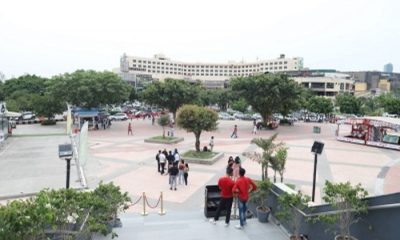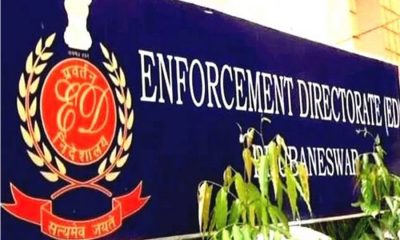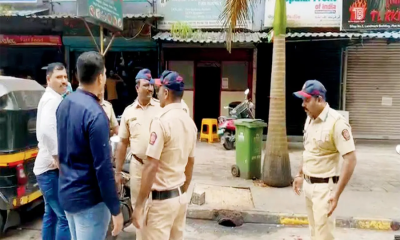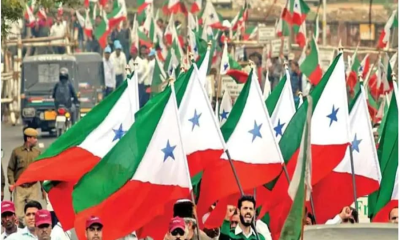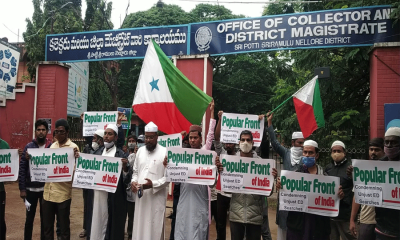Maharashtra
The long hand of ED and the rise of Maha’s ED (Eknath-Devendra)
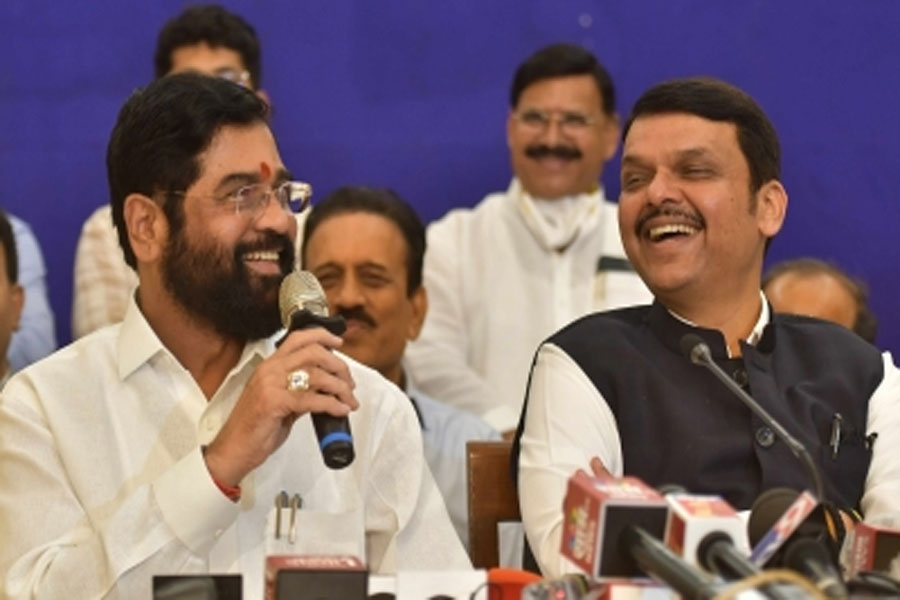
At the special session of the Maharashtra Legislative Assembly on July 3-4, during the voting the Opposition benches of the Shiv Sena-Nationalist Congress Party-Congress reverberated with catcalls of ‘ED’, ‘ED’ to at least one MLA in the House.
The jeering and taunts were directed at the Shiv Sena MLAs group which had revolted on June 20, leading to the collapse of the 3-party 31-month-old MVA alliance — headed by ex-Chief Minister Uddhav Thackeray — on June 29.
Ten days later on June 30, a new Bharatiya Janata Party-supported government headed by Chief Minister Eknath Shinde and Deputy Chief Minister Devendra Fadnavis was sworn-in, making it one of the swiftest state political coups in recent decades, and the first of its kind in Maharashtra.
Sensing the �sour mood’ of the Opposition, the Deputy CM later �concurred’ with them, in a lighter vein stating that now, indeed – an �E’-�D’ government – comprising �E’knath Shinde and �D’evendra Fadnavis was in power here.
A harbinger of things to come in the future�?, as many legislators on both sides were left wondering� with central investigation agencies like the Income Tax Department, Enforcement Directorate, Central Bureau of Investigation, Narcotics Control Bureau, et al — once invisible lurking ghosts, but now common household names and the butt of many a joke and memes.
Back in September 2019, the ED had dropped its own IED by issuing a statement naming – of all persons, Nationalist Congress Party president Sharad Pawar in an alleged money-laundering scam cooked up in the Maharashtra State Cooperative Bank Ltd.
Unfazed, Pawar took what he termed �the ED’s love-message’ in his stride, and �self-summoned’ himself, dressing up to report suo-moto at the ED office, and perhaps, give the investigators a sharp �love-bite’, too!
Aware of a possible law-and-order situation as thousands of NCP workers prepared to join Pawar’s �ED yatra’, the then BJP-led government of CM Fadnavis panicked.
He immediately deputed the then Police Commissioner to meet and cajole the irked Pawar to abandon his plans – and since that �masterstroke’, the 81-year-old Maratha has not heard from the ED, but recently, the IT department has sent him a notice.
After the BJP-led NDA government took over at the Centre, the non-BJP ruled states, including Maharashtra post-Nevember 2019, are feeling the heat as many of their prominent leaders are being fried on the griddle of one or multiple central agencies.
In fact, Maharashtra had become a favourite hunting ground of the central snoops during the MVA government and the three alliance partners screamed from the rooftops at how the BJP has let loose the ED, IT, CBI, NCB to terrorise and silence them.
However, concealing a smile on a straight face, the BJP leaders airily dismissed all allegations and the central agencies remain freely on the prowl.
The past few years have seen over a dozen Sena-NCP-Congress leaders under microscopic scrutiny, playing havoc with the politicians, their political careers and parties, and lately, even an entire state government.
The targets so far: ex-CM Thackeray’s brother-in-law Shridhar M. Patankar, close associates of son and ex-Minister Aditya Thackeray, while ex-Minister Anil Parab was closeted inside the ED office and outside, his government was crumbling in late-June, Sena MPs Sanjay Raut and Bhavana Gawali – the latter, sacked as the party’s Chief Whip in the Lok Sabha, several legislators like Pratap Sarnaik, MLA Yamini Jadhav’s husband and BMC leader Yashwant Jadhav, Arjun Khotkar, and many more.
In the NCP, those in focus were the close relatives of ex-Deputy CM (new Leader of Opposition) Ajit Pawar, four former ministers — Anil Deshmukh, Nawab Malik (both arrested), Prajakt Tanpure and Eknath Khadse — the last one faced the ED ire after he switched over from the BJP to the NCP and several more coming onto the radar.
Some Congress leaders have complaints against them though the agencies have not yet hounded them. Ex-Congress minister Harshvardhan Patil said on record that after joining the BJP, “there are no enquiries” and he “enjoys sound sleep !”
Post-MVA collapse, there were political murmurs hinting that a couple of top rebels and more than two dozen MLAs who flocked together were reportedly under the lens of one or more agencies.
Some bitter MLAs have also pointed fingers at the MVA leaders for “failure to protect them” from the ceaseless assault of the investigation agencies and felt it �safer’ to ally with the BJP. Pawar once complained to Prime Minister Narendra Modi about the harassment.
Probably a telling indicator of the dreadful reputation of the probe organisations, which are now perceived as the most effective �ammunition’ against the Opposition.
Maharashtra
Mumbai: Accused wanted in Kurla Methi River irregularities arrested, accused of cheating crores of rupees and creating fake AMU
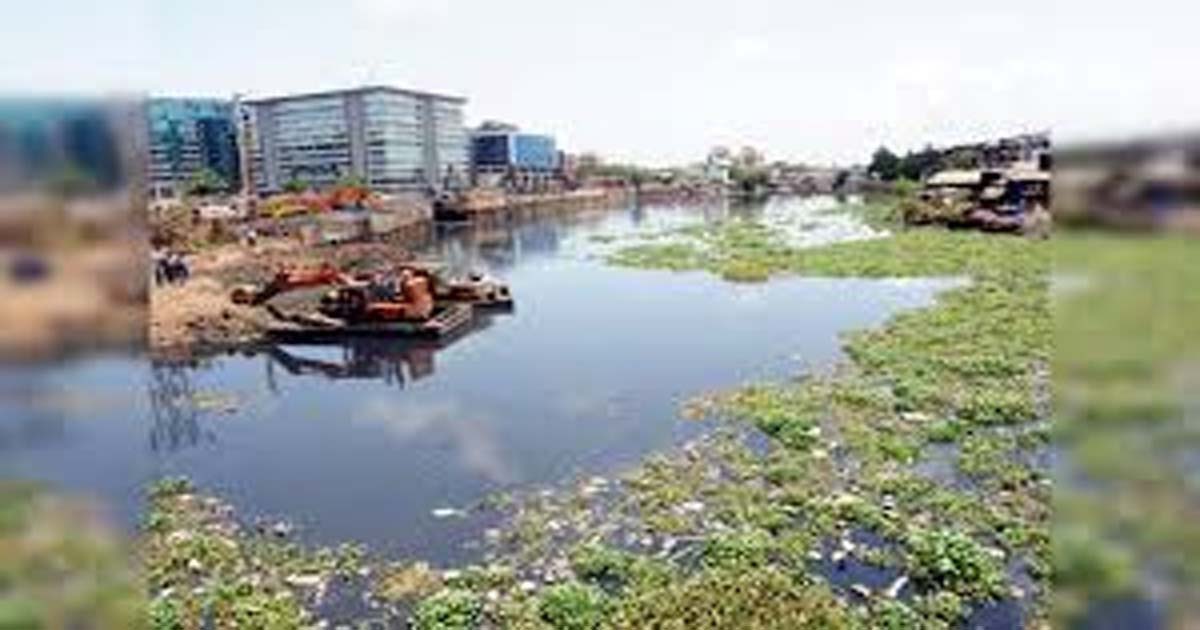
Mumbai: Economic Wing AOW has claimed to have arrested the wanted accused and contractor in the case of Mithi Nadi cleanliness and irregularities. The AOW has arrested the absconding wanted Sunil Shyam Narayan SM Infrastructure, Mahesh Madhav Rao Purohit. During the investigation of the Mithi Nadi contract and irregularities worth crores of rupees, the police had registered a case. Earlier, three accused were arrested. According to the EOW, from 2013 to 2023, fake MAUs were prepared and bills worth crores of rupees were approved in collusion with BMC officers. A proposal to purchase a machine to remove garbage from 2021 to 2024 was also approved and under the guise of the same, a fraud of crores of rupees was committed for cleaning the garbage. In this case, the police have arrested the accused agents Ketan Kadam, Jay Joshi and Mithi Nadi contractor Sher Singh Rathore. By preparing fake documents, the accused also prepared fake AMUs and also signed fake signatures. The accused were produced in court and remanded in custody until December 16.
Maharashtra
ED, ATS Conduct Raids Across Maharashtra & Delhi Over Suspected Terror-Funding
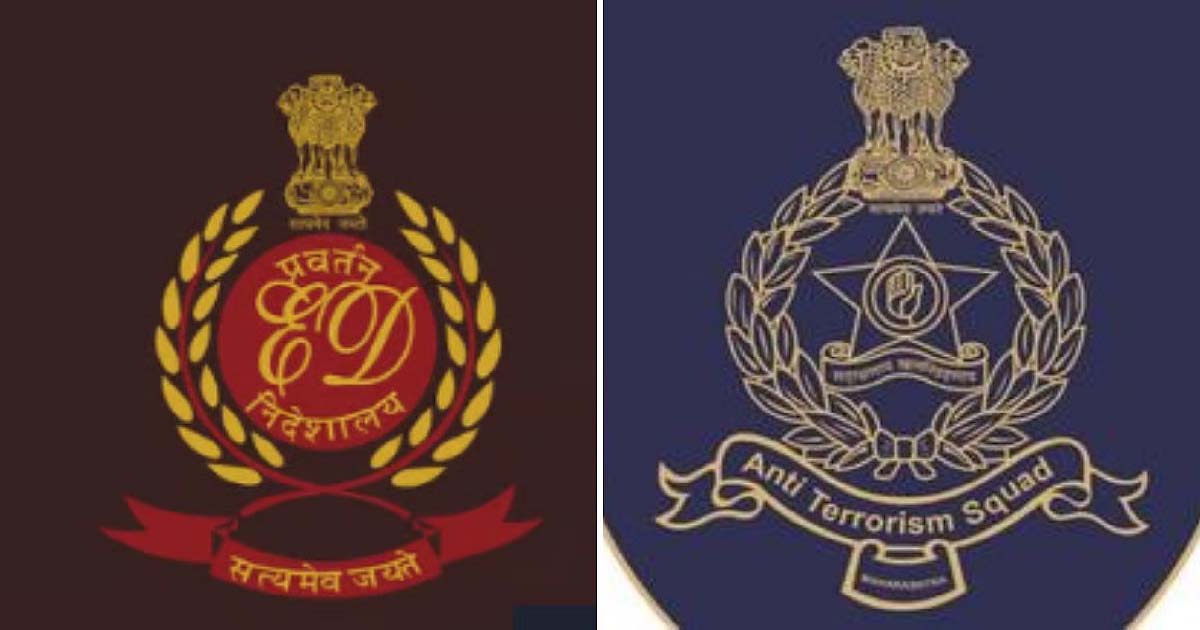
Mumbai: The Enforcement Directorate (ED) on Thursday carried out a coordinated search operation in Borivali village near Padgha in Thane district, with assistance from the Maharashtra Anti-Terrorism Squad (ATS), officials said.
The operation, which began in the early hours of Thursday, extended to multiple residential premises as ED officials probed suspected terror funding and related financial transactions. ATS personnel provided on-ground support to coordinate the ED searches.
According to ED officials, the searches were conducted at nearly 40 locations across Maharashtra including Padgha, Pune, and Malegaon as well as in Delhi. The searches are linked to suspected financial transactions associated with terror-related activities.
The ED had recently registered an ECIR linked to the NIA’s ISIS terror module case involving Saquib Nachan, as well as the Pune ISIS module case. While ATS is simultaneously investigating the same modules, it is assisting the ED by sharing intelligence, leads, and field updates, helping ensure that the ongoing search operations are thorough, coordinated, and synchronised.
Officials said the operation is ongoing, with teams continuing to probe the suspected financial networks connected to the terror modules.
Maharashtra
Raj Thackeray Appears Before Thane Court, Denies Guilt In 2008 Railway Assault Case
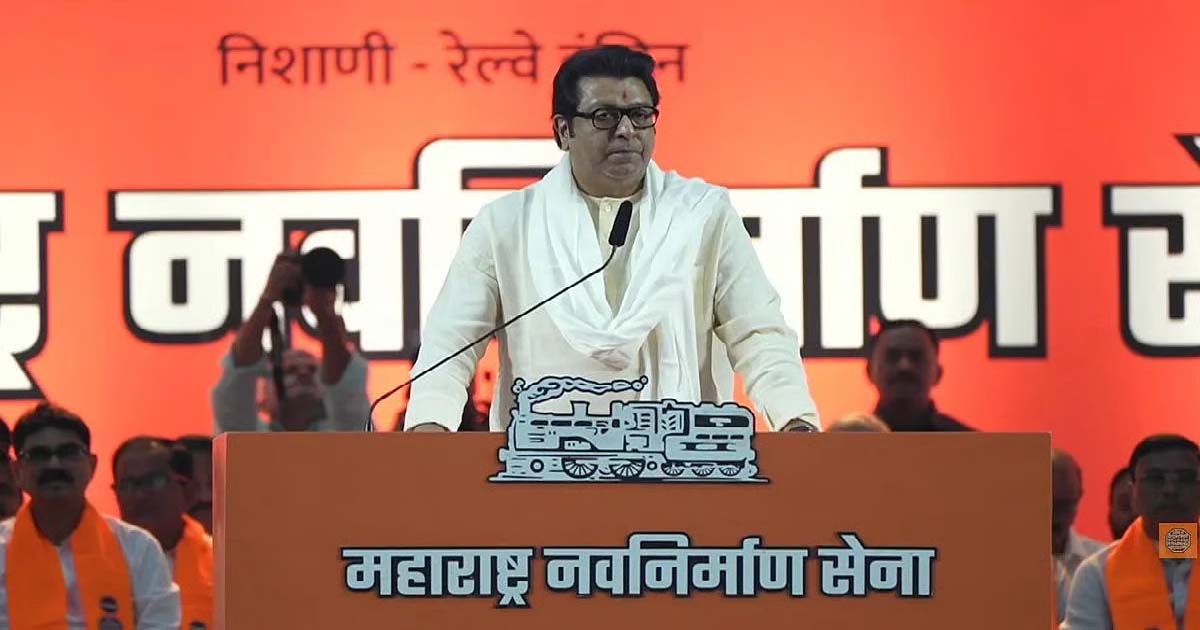
MNS chief Raj Thackeray appeared before the Thane Railway Court on Thursday for a hearing linked to the 2008 railway recruitment violence at Kalyan station. The incident involved MNS workers assaulting North Indian candidates who had arrived for recruitment exams, leading to disruption and damage to railway property. A case was registered against Thackeray and several party workers soon after.
During the brief hearing, the judge asked Thackeray whether he confessed to the charges. Thackeray replied that he did not admit guilt. The judge noted that the matter could be concluded within a month and asked for full cooperation from all accused. Thackeray agreed to comply.
Speaking after the hearing, Thackeray’s lawyer Omkar Rajurkar said the next date has not been decided yet and will be issued later. He added that Thackeray does not need to appear again in person unless directed. Rajurkar confirmed that the court asked whether the accused admitted to the crime, and Thackeray stated clearly that he did not. The judge reiterated that cooperation was expected as the case nears completion.
Rajurkar stressed that Thackeray would continue to cooperate fully with the proceedings.
The case dates back to 2008, when MNS workers allegedly targeted North Indian candidates at Kalyan station during a railway recruitment drive. The attackers argued that migrant job seekers were taking opportunities meant for local youth. Following the violence, a case was filed against Raj Thackeray and seven MNS workers, all of whom were arrested but later released.
Originally heard in the Kalyan Court, the matter was later shifted to the Thane Railway Court. Due to repeated absence of the accused at earlier hearings, the court had issued an arrest warrant, which was later cancelled after an application by Thackeray’s legal team.
With the court indicating that the case could conclude within a month, the matter now moves towards its final phase.
-

 Crime3 years ago
Crime3 years agoClass 10 student jumps to death in Jaipur
-

 Maharashtra1 year ago
Maharashtra1 year agoMumbai Local Train Update: Central Railway’s New Timetable Comes Into Effect; Check Full List Of Revised Timings & Stations
-

 Maharashtra1 year ago
Maharashtra1 year agoMumbai To Go Toll-Free Tonight! Maharashtra Govt Announces Complete Toll Waiver For Light Motor Vehicles At All 5 Entry Points Of City
-

 Maharashtra1 year ago
Maharashtra1 year agoFalse photo of Imtiaz Jaleel’s rally, exposing the fooling conspiracy
-

 National News1 year ago
National News1 year agoMinistry of Railways rolls out Special Drive 4.0 with focus on digitisation, cleanliness, inclusiveness and grievance redressal
-

 Maharashtra1 year ago
Maharashtra1 year agoMaharashtra Elections 2024: Mumbai Metro & BEST Services Extended Till Midnight On Voting Day
-

 National News1 year ago
National News1 year agoJ&K: 4 Jawans Killed, 28 Injured After Bus Carrying BSF Personnel For Poll Duty Falls Into Gorge In Budgam; Terrifying Visuals Surface
-

 Crime1 year ago
Crime1 year agoBaba Siddique Murder: Mumbai Police Unable To Get Lawrence Bishnoi Custody Due To Home Ministry Order, Says Report



